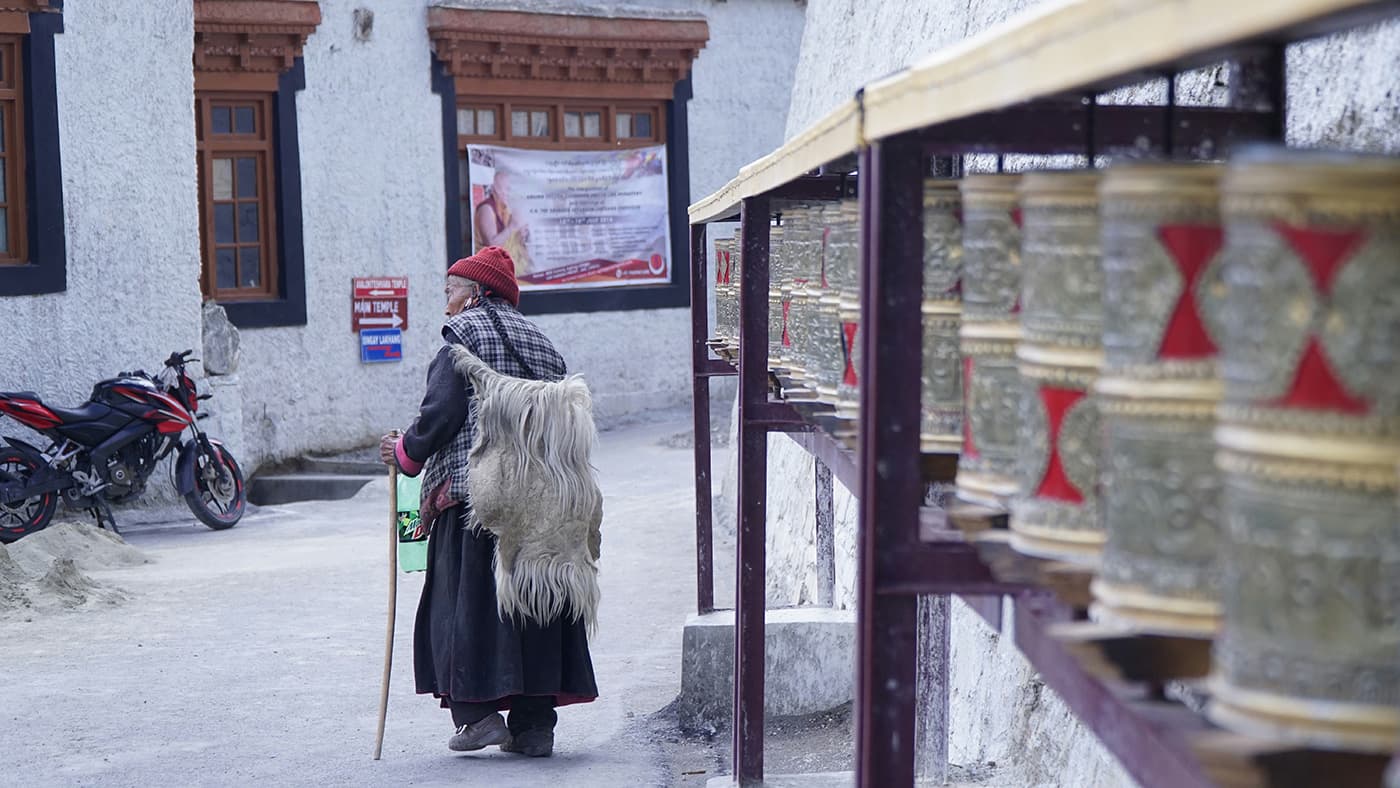Any of the agencies in Leh can also help with arranging your transport. This can be useful if you want to team up with other trekkers to split the cost of the ride. However, you can also speak with any of the taxi drivers independently and arrange your transport and organize everything yourself. The taxi costs around 3600 INR (40 euros) from Leh to the trailhead, which you can split between you and other travelers if you share the journey.
As with much of India’s infrastructure, the ongoing road construction has meant that the trailhead has moved over time, and will likely keep moving. You can start at the original starting point of Chilling or further along in Skiu or even Sara. The dirt road is extended all the way here so you can choose where you want to begin as the taxi driver will take you to any of these points, but note that the dusty dirt road isn’t the most inspiring section of the trek!
There is also an alternative start point, at Zingchen, which is a shorter distance to drive from Leh. From Zingchen you will follow the path to Rumbak and then up to Ganda La pass at 4900m and then down to Skiu to meet the Markha Valley trek. This alternative adds between 2-3 days extra onto your hike, and it’s recommended that you first acclimatize in Leh beforehand. Taxis from Leh to Zingchen cost around 1900 INR (21 euros).
The elevation isn’t too demanding for the first couple of days, just a slow inclination in the profile. The real kick-up begins when you turn away from the river towards the village of Hankarm and beyond.
For navigation, you’re unlikely to go wrong until Kongmaru Pass. There are always animal droppings along the path as the mules are so regularly passing back and forth with supplies. There are also lots of other hikers on the trail, so you’ll be able to confer with them and follow their footsteps. The trail is marked on the app maps.me which is a useful resource to have with you.
On the descent through the valley on the final day, the trail can be difficult to follow in parts. This may be due to landslides and the changing flow of the river. The trail goes up and down, quite steeply in places through the valley, and towards the end, you need to cross the river a few times. Simply follow the donkey droppings, as so many locals use the trail, and cross at safe points along the river and before long you will find your way to Chogdo where there is a homestay to either rest or drink a chai before heading back to Leh. You can either arrange your taxi pick up from here ahead of time, with the driver that dropped you at the start, or you wait to see who’s waiting at the homestay and share a lift with other trekkers.














